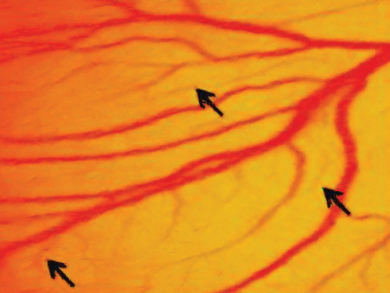Angiogenesis describes the process of forming new blood vessels from pre-existing vasculature. It plays a pivotal role in the treatment of cancer and cardiovascular related diseases. Graphene oxide (GO) as well as reduced graphene oxide (rGO) show biological activities in nano-medicine applications.
Chitta Ranjan Patra, CSIR-Indian Institute of Chemical Technology, Hyderabad, India, and colleagues investigated the pro- and anti-angiogenic properties of GO and rGO. Using various in vitro and in vivo angiogenesis assays, they revealed the underlying biological mechanism: reactive oxygen species (ROS), found naturally in all cells, activate a cellular signaling pathway which subsequently leads to the enhancement of intracellular NO production that triggers angiogenesis.
Moderate doses of GO and rGO of 1–50 ng/mL lead to a controlled production of ROS that promotes angiogenesis. Higher doses of more than 100 ng/mL of GO or rGO have a reverse effect: They induce an extensive generation of ROS, which is cytotoxic to cells. The signaling pathways are truncated, resulting also in an overall anti-angiogenic effect.
- Graphene Oxides Show Angiogenic Properties,
Sudip Mukherjee, Pavithra Sriram, Ayan Kumar Barui, Susheel Kumar Nethi, Vimal Veeriah, Suvro Chatterjee, Kattimuttathu Ittara Suresh, Chitta Ranjan Patra,
Adv. Healthcare Mater. 2015.
DOI: 10.1002/adhm.201500155




